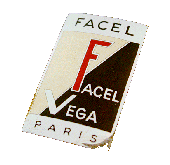Hier die Schritte zum Einbau der Panorama-Frontscheibe des HK500 (und früher):
Die Gummidichtung wird stramm um die Frontscheibe gelegt und die korrekte Länge abgeschnitten. Dann diese Länge um 10 bis 12 cm kürzen und die Gummistränge sauber mit Sekundenkleber zusammensetzen. Nun die Reste des Gummiprofils in vier etwa 10 cm lange Stränge schneiden und die Frontscheibe auf diesem Gummilager in den Karosserieausschnitt plazieren. Jetzt die Scheibe so positionieren, dass die nach hinten Richtung Tür zeigenden Enden der Scheibe einen gleichmäßigen Abstand zum metallenen Scheibenrahmen haben (jeweils etwa 8mm). Oben und unten in der Mitte der Scheibe wird nun eine Markierung (z.b. Filzstift) angebracht, die auf die Karosserie übertragen wird. Damit ist der symmetrische Sitz der Scheibe dokumentiert. das ist wichtig, weil die auslaufenden Enden der Scheibe später durch das umlaufende Profilgummi verdeckt werden. Nun das Gummiprofil um die Scheibe legen. Es sollte jetzt so stramm sitzen, dass in der engen Biegung der Scheibe keine Falten im Gummi sichtbar sind. Die Naht des geklebten Gummis sollte unten sein, weil sie dann weniger ins Auge fällt. Nun kommt der Trick mit Schmierseife und Wäscheleine (aus Plastik), um die Scheibe einzubauen und die innere Gummilippe über die Kante der Karosserie zu ziehen. Ist die Scheibe platziert können die polierten Edelstahlteile eingezogen werden. Hier mit viel Karosseriedichtmasse arbeiten, um die Löcher in der Karosserie wasserdicht zu machen. Die untere Edelstahlleiste im Gummiprofil soll diese noch stärker gegen das Glas drücken. Daher nun die untere innere Gummilippe vor die obere äußere ziehen. Jetzt die Leiste zentrieren und die obere Gummilippe wieder nach außen ziehen. Bei dieser Aktion kann auch Schmierseife helfen und eine Häkelnadel oder anderes (selbstgebautes) Werkzeug.
Here are the steps to install the panorama windscreen of the HK500 (and earlier):
Place the rubber seal tightly around the windscreen and cut off the correct length. Then shorten this length by 4 to 5 inches and neatly join the rubber strands with superglue. Now cut the remains of the rubber profile into four strands about 4 inches long and place the windscreen on this rubber support in the body cut-out. Now position the windscreen in such a way that the ends of the windscreen (pointing backwards towards the door) have an even distance to the metal windscreen frame (about 5/16 inch each). Mark (e.g. with a felt-tip pen) the top and bottom centre of the screen and transfer it to the metall frame. This documents the symmetrical fit of the windscreen. This is important because the ends of the windscreen will later be covered by the rubber profile. Now place the rubber profile around the glass. It should now be so tight that no wrinkles are visible in the rubber in the tight bend of the edges. The seam of the glued rubber should be at the bottom because then it is less visible. Now comes the trick of using soft soap and a clothesline (made of plastic) to fit the windscreen and pull the inner rubber lip over the edge of the body. Once the glass is in place, the polished stainless steel parts can be put in. Use plenty of body sealant here to make the holes in the body watertight. The lower stainless steel strip in the rubber profile should press it even harder against the glass. Therefore, now pull the lower inner rubber lip in front of the upper outer one. Now centre the strip and pull the upper rubber lip outwards again. Soft soap and a crochet hook or other (homemade) tool can also help with this action.
Voici les étapes à suivre pour installer le pare-brise panoramique du HK500 (et précédent) :
Le joint en caoutchouc est placé bien serré autour du pare-brise et la longueur correcte est coupée. Raccourcir ensuite cette longueur de 10 à 12 cm et assembler proprement les brins de caoutchouc avec de la colle cyanoacrylate. Couper maintenant les restes du profilé en caoutchouc en quatre brins d'environ 10 cm de long et placer la vitre avant sur ce support en caoutchouc dans la découpe de la carrosserie. Positionner maintenant la vitre de manière à ce que les extrémités de la vitre orientées vers l'arrière en direction de la porte soient à égale distance du cadre métallique de la vitre (environ 8 mm chacune). En haut et en bas, au milieu de la vitre, il faut faire une marque (par ex. au feutre) qui sera reportée sur la carrosserie. La position symétrique de la vitre est ainsi documentée. C'est important car les extrémités de la vitre seront cachées plus tard par le caoutchouc profilé. Poser maintenant le profilé en caoutchouc autour de la vitre. Il doit maintenant être suffisamment serré pour qu'aucun pli ne soit visible dans le caoutchouc lorsque la vitre est pliée. La couture du caoutchouc collé doit être en bas, car elle est alors moins visible. C'est maintenant qu'intervient l'astuce du savon mou et de la corde à linge (en plastique) pour installer la vitre et faire passer la lèvre intérieure en caoutchouc sur le bord de la carrosserie. Une fois la vitre en place, les pièces polies en acier inoxydable peuvent être insérées. Travailler ici avec beaucoup de mastic d'étanchéité pour carrosserie afin de rendre les trous dans la carrosserie étanches. La lèvre inférieure en acier inoxydable dans le profilé en caoutchouc doit la presser encore plus fortement contre la vitre. C'est pourquoi il faut maintenant tirer la lèvre en caoutchouc intérieure inférieure devant la lèvre extérieure supérieure. Centrer maintenant la baguette et tirer à nouveau la lèvre en caoutchouc supérieure vers l'extérieur. Pour cette action, du savon mou peut également être utile, ainsi qu'un crochet ou un autre outil (fait maison).








